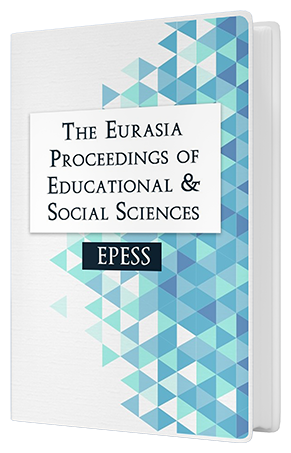STUDENT BEHAVIORS AND PERCEPTIONS IN A FLIPPED CLASSROOM: A CASE IN AN OPERATING SYSTEMS COURSE
Keywords:
Flipped classroom, student perception, blended learning, operating systemsAbstract
In technical majors like computer, in laboratories of which students could only have access to hardware and software, using time effectively is of the essence. For students to gain experience, it is important that they have experiments in courses like Network Systems and Server Operating Systems. With the development of internet and Learning Management Systems, more and more instructors have started to flip their courses by using technologies like videos, online homework, social networks, and forums. In a flipped class, students have the responsibilities of their learning. Lessons are presented online, instructors guide the in-class applications and interact more with their students. Having the aim of learning students\' opinions on flipped classes, this study was implemented in a four-hour Network Systems Laboratory with the participation of 25 students, who took the Operating Systems Course in a vocational college during the spring semester of 2015-2016 Academic Year. Instructors loaded the maximum 10-minute videos, course materials and projects on the system. Under the guidance of their instructors students did the weekly projects in class. Three application tests, the averages of which were 54.20, 89.16, and 86.8 respectively, were given to students through the semester. Students were interviewed right after the first and third test applications. After the first test, students reported that the visuals were good, but they preferred the lessons to be delivered by the instructors; after the third test students stated that they did more applications during classes and in laboratory hours of other courses this method also could be utilized to provide more space for applications. The results of this study showed that flipped classes could be effectively used in courses where students don\'t have much time for applications outside laboratory hours, however students need to be informed of the method and the expectations right at the beginning.Downloads
Published
Issue
Section
License
Copyright (c) 2016 The Eurasia Proceedings of Educational and Social Sciences

This work is licensed under a Creative Commons Attribution-NonCommercial-ShareAlike 4.0 International License.
The articles may be used for research, teaching, and private study purposes. Any substantial or systematic reproduction, redistribution, reselling, loan, sub-licensing, systematic supply, or distribution in any form to anyone is expressly forbidden. Authors alone are responsible for the contents of their articles. The journal owns the copyright of the articles. The publisher shall not be liable for any loss, actions, claims, proceedings, demand, or costs or damages whatsoever or howsoever caused arising directly or indirectly in connection with or arising out of the use of the research material. All authors are requested to disclose any actual or potential conflict of interest including any financial, personal or other relationships with other people or organizations regarding the submitted work.




